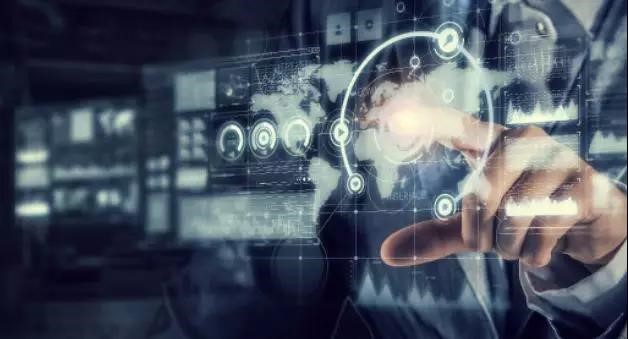Foreword: Huawei's vision of building a fully connected and intelligent world is now even clearer thanks to the launch of AI-based PV solution. AI drives us into a fully connected smart PV era.

In the looming shadow of the global 5G revolution, an invisible battle is underway.
International energy giants EDF, Enel, ENGIE, and Iberdrola have launched ambitious strategies for the future. From energy production to management, digital technologies promote energy consumption transformation from thermal to renewables such as photovoltaic (PV) and wind power.
After Chinese PV manufacturing industry climbing to the top of the world, millions of people are marching into the final battle to make their PV plants to be grid parity. PV is even more competitive in 2019, as requirements for cost control and data precision of PV plants are fine-tuned from the mechanical watch level to the atomic clock level.
PV Project Powered by AI Engine
By 2018, 170 GW of PV modules were installed in China over a diversity of latitudes, terrains, climates, and solar irradiation. Massive volumes of data are generated from every one of these multiple brands of PV modules and solar inverters, customized design and construction, and large number of maintained components. Huawei has been using PV Big Data to train AI for the past five years.
These past five years, Huawei has shipped 90 GW of string PV inverters worldwide, connecting nearly 330 million PV modules. 1 GW PV plant generates 1 TB (1000 GB) per annum in total. 50 kW inverter, with total 15 million units’ shipments, function as both the eyes and brain of a PV plant. Huawei solar inverter transmits information such as local climate, current, voltage, temperature, and fault alarm to the data center while performing simultaneous edge computing. Leveraging its extensive and intensive experience with big data, Huawei has been cultivating and finally launching the most powerful digital engine for grid parity.
The AI BOOST 1500V FusionSolar Smart PV Solution covers solar inverter, PV module, tracking system, O&M, grid stability, future electricity trading and financing, big data, AI, power electronics, meteorology, and astronomy, and can perform self-learning , continuous optimization, plant health check, fault rectification, equipment evaluation, intelligent solutions, grid stability, and collaborative ecosystem construction.
- Electronic, chip, computing, AI, and other digital information technologies simplifying complex problems
- Smart trackers controlled by AI algorithms + bifacial PV modules enabling power supply, and communication, reducing CAPEX and maximizing energy yield
- Smart I-V diagnosis, AI identification, and online multi-scenario diagnosis help transform O&M towards “autonomous driving”
- Huawei AI grid-connection algorithm with active harmonic control adapting to harsh grid environments, maintaining grid connection, and improving plant stability. Huawei helps PV plants shift from simply adapting to the power grid, to supporting it.
Collaborating Across Domains Towards a Fully Connected, Smart PV World
For Huawei, the world is borderless.
Currently, the industry integrates advanced technologies such as 1500 V solar inverters + bifacial PV modules + trackers + multiple MPPTs with the most significant goals for grid parity being reducing initial costs and improving yield. Huawei reports that AI data analysis is likely to disrupt traditional design and O&M concepts. Through system integration and AI self-learning, the system was able to obtain the optimal tracking angles of bifacial PV modules in a PV plant at 32°N.
AI accelerates fault rectification of PV plants by 2/3 while fortifying component weaknesses. Among the 5 GW of PV modules that underwent Smart I-V Curve Diagnosis, 54.81% reported diode circuit failure in PV strings. The next two most common faults were abnormal string output currents and string open circuits. Thanks to this information, PV manufacturers can take proactive measures to rectify such faults. This diagnostic tool demonstrates how Huawei has leveraged its years of expertise and experience into its own ICT platform to help customers solve potential problems.
From solar inverters to system solutions, industry ecosystems, and future-oriented energy interconnection and AI in the PV industry, Huawei contributed six generations of evolution into the intelligent era.
Looking to the future, Huawei R&D emerges from its 2012 Laboratories to collaborate with international energy giants such as Enel and EDF on the new landscape of energy restructuring. AI builds grid-friendly PV plants that can automatically learn and adapt to grid features, preventing PV interference.
When asked about Huawei's biggest contribution to the PV industry, Huawei's PV technical owner responded, "I think that firstly, Huawei redefines solar inverters. If Huawei had not entered this industry, solar inverters would remain inverters." Huawei has taken the initiative to transform these simple power components into power-based digital terminals, and it is Huawei who conceptualized full coverage from the grid to the PV digital center.
In 2013, Huawei and Huanghe Hydropower jointly launched the smart PV solution. The PV technical owner explained Huawei's motivation, "In bringing our leading ICT technologies to the PV industry, we aim not only to digitalize PV plants, but also enable the industry to enjoy the high reliability, higher security, and heat dissipation, eLTE wireless, and PLC communication technologies we have built over the past 25 years." While such breakthroughs might not be revolutionary or proprietary, Huawei has led them to the PV industry and in turn, accelerated its transformation.
While integrating PV with power grid technologies, Huawei also integrates its own structure. Apart from its communications technology departments, the company's AI, cloud computing and majority of other departments have been introduced into its overall solution. With an overall platform of such importance, Huawei is prioritized and preferred by international customers, who work as partners towards energy digitalization.
This is what the AI BOOST PV project about: structural evolution of the PV industry from a single-dimensional chain to a two-dimensional plane. In the future, a three-dimensional system will comprise complementary PV, multiple energy sources, and power grids. Each breakthrough brings infinite possibilities.
Through internal and external chains, Huawei strives to be the foundation for its customers and joins hands to achieve shared success.

 India
India


